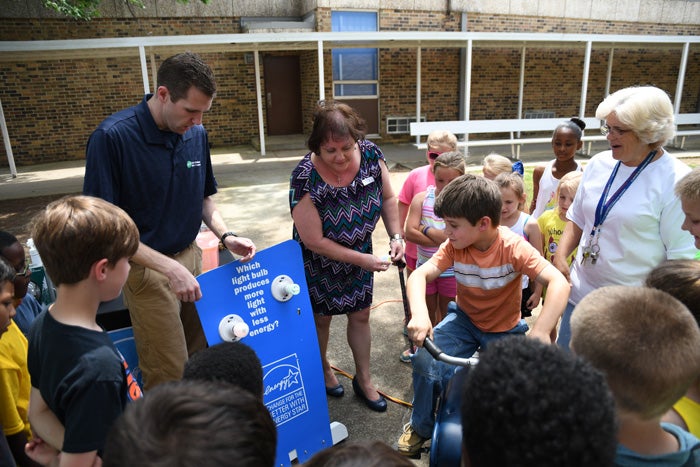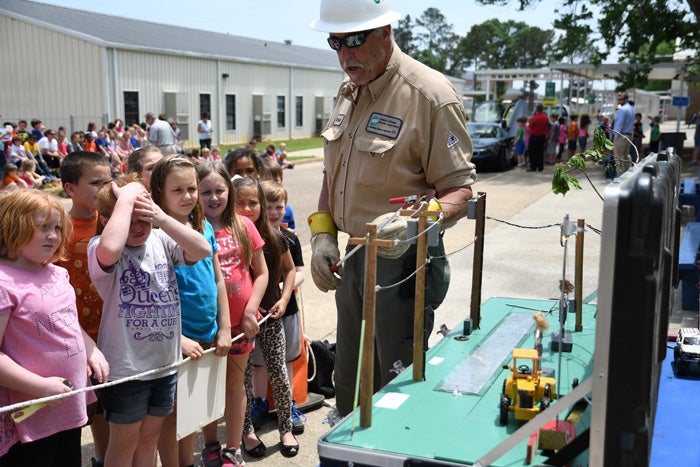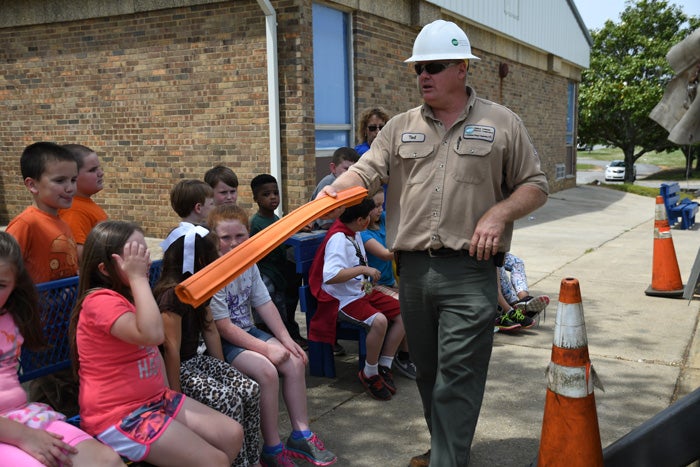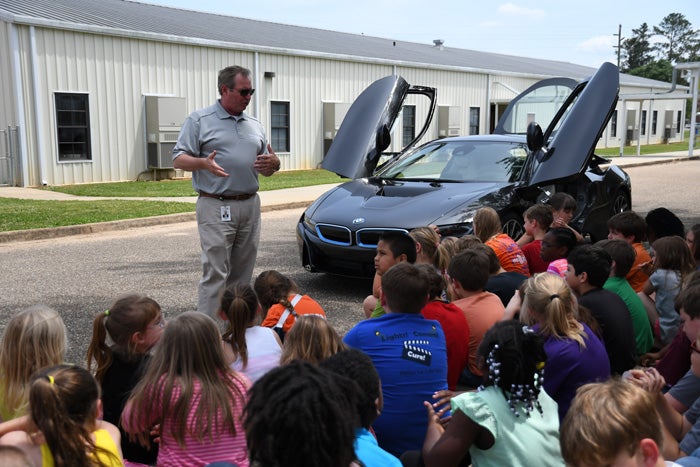Students learn first-hand about energy (with photo gallery)
Published 8:10 am Saturday, April 30, 2016
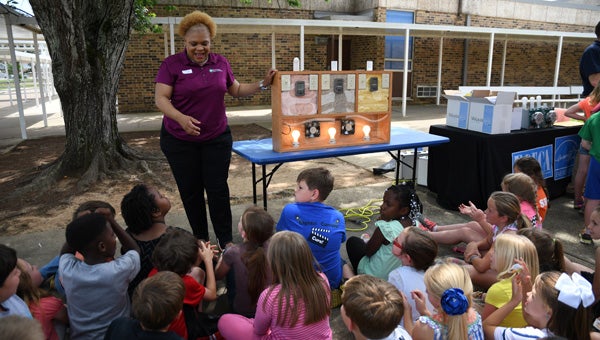
Watch and learn: Cindy Browder with Central Alabama Electric Cooperative talks to students about the importance of insulation in reducing energy usage. The model used by Browder uses light bulbs to show how heat travels through different types of insulation. Browder’s station was one of several designed to educate students about energy at an event Friday at Clanton Elementary School. (Photos by Stephen Dawkins)
Talking or reading about energy is one thing. Seeing it in action is quite another.
Students at Clanton Elementary and Intermediate Schools had the opportunity to take a hands-on approach to learning about energy on Friday thanks to a partnership between the Chilton County School System, Alabama Department of Economic and Community Affairs, Central Alabama Electric Cooperative and Alabama Power.
“The goal was to show our kids how energy savings works,” said Mickey Hardwick, energy manager for Chilton County Schools.
One station at CES featured a bicycle that powered two light bulbs, demonstrating the different amount of energy needed for incandescent versus more energy efficient bulbs.
Nearby, students learned about the importance of insulation in conserving energy.
Next, a CAEC employee using a model with live miniature power lines drove home the point about the dangers of electricity.
Another CAEC worker showed students a typical work truck, complete with a lift bucket, and let them try on equipment.
Perhaps the most popular station was an electrical car: a BMW i8.
Students Lyndon Binion and Caysen Craig said the car was impressive because it runs on electricity but also for another reason: “It has doors that go up instead of out,” Craig said.
Binion said the station about power lines also made an impression.
“He was talking about how power lines can hurt you,” he said.
About 450 students in second and third grades attended the event.
Superintendent Tommy Glasscock said he thinks students learning about energy at school will become better stewards at home.
“We think there’s a huge tie between the two,” Glasscock said.
The event was held in recognition of Earth Day, which was April 22.
“Each day is Earth Day,” said Liz Cochran with ADECA’s energy education division. “We are working daily to educate K-12 schools, businesses, municipalities, non-profits, hospitals and citizens how to become more energy efficient.”
Students will also begin seeing energy at work in a different form in the coming months as power has been made available at a school greenhouse.
CES Principal Robin Cagle said previous attempts at growing plants in the greenhouse were unsuccessful because there was no way to circulate air.
Another tangible benefit of the school system’s energy policies will be the results of recent savings.
Hardwick said there has been a reduction in the system’s energy costs of $160,000 in the last eight months.
The money could be used to meet technology needs.
“We’re excited about that because we’re trying to become 21st Century schools,” Cagle said.


